Hello! This is the UTSUWABI editorial staff.
In this issue, as “Japan Kutani,” we would like to introduce Kutani-yaki, one of Japan's representative colored porcelains.
Kutani-yaki is a traditional handicraft of Ishikawa Prefecture and has been produced mainly in Nomi City for about 360 years.
In recent years, Kutani ware has become popular among people of all ages, both in Japan and abroad, not only for its traditional designs, but also for its cute illustrations, and for its collaboration products with popular characters such as Doraemon and Pokemon.
In this issue, we will introduce Kutani Yaki, its characteristics, recommended products, and sightseeing facilities related to Kutani Yaki.
If you would like to know what kind of vessels are available in Kutaniyaki, please click here! If you would like to know more about Kutaniyaki, please click here.
What is Kutani-yaki?
Characteristics of Kutani Ware
Kutani-yaki, a traditional craft of Ishikawa Prefecture, is characterized by its vivid colors.
The glazes called “Kutani Gosai” (red, blue, yellow, purple, and navy blue) are used as the base color, and gorgeous paintings are painted all over the vessels.

Because of its high quality, it is called a work of art, and has a high artistic value, with many patrons and collectors in Europe and the United States.
The raw material is Hanasaka pottery stone, which comes from one of the most famous pottery mountains in Japan, located in Komatsu City, Ishikawa Prefecture.
The stone is of such high quality that it is said, “It is not Kutani-yaki unless it is made of Hanasaka stone,” and after firing, the base of the stone takes on a slightly bluish hue.
This transparent blue color enhances the luster and gorgeousness of the color painting, and is an indispensable raw material for making Kutaniyaki.
History of Kutani Ware
It is said that the discovery of a potter's stone in a gold mine in Kutani Village (present-day Kaga City) around 1655 in the early Edo period was the beginning of Kutani ware.
Maeda Toshitsune of the Kaga domain ordered the opening of a kiln in Kutani, and Goto Saijiro, a samurai of the domain, learned pottery-making techniques in Arita.
Returning to Kaga, Saijiro built a kiln and produced porcelain with a unique stylistic beauty, influenced by the beautiful decorative elements of the Kaga Hyakumangoku culture.
The kiln was closed in the 1700s, but with a strong desire to revive Kutani-yaki, he rebuilt it after receiving technical guidance from craftsmen in Kyoto.
In 1873, Kutani-yaki was exhibited at the World Exposition in Vienna, attracting the attention of Europeans and spreading the name of Kutani-yaki throughout the world.
Recommended Tableware
15cm/5.9in Bowl Karako Porcelain Seikou Kiln Kutani Ware
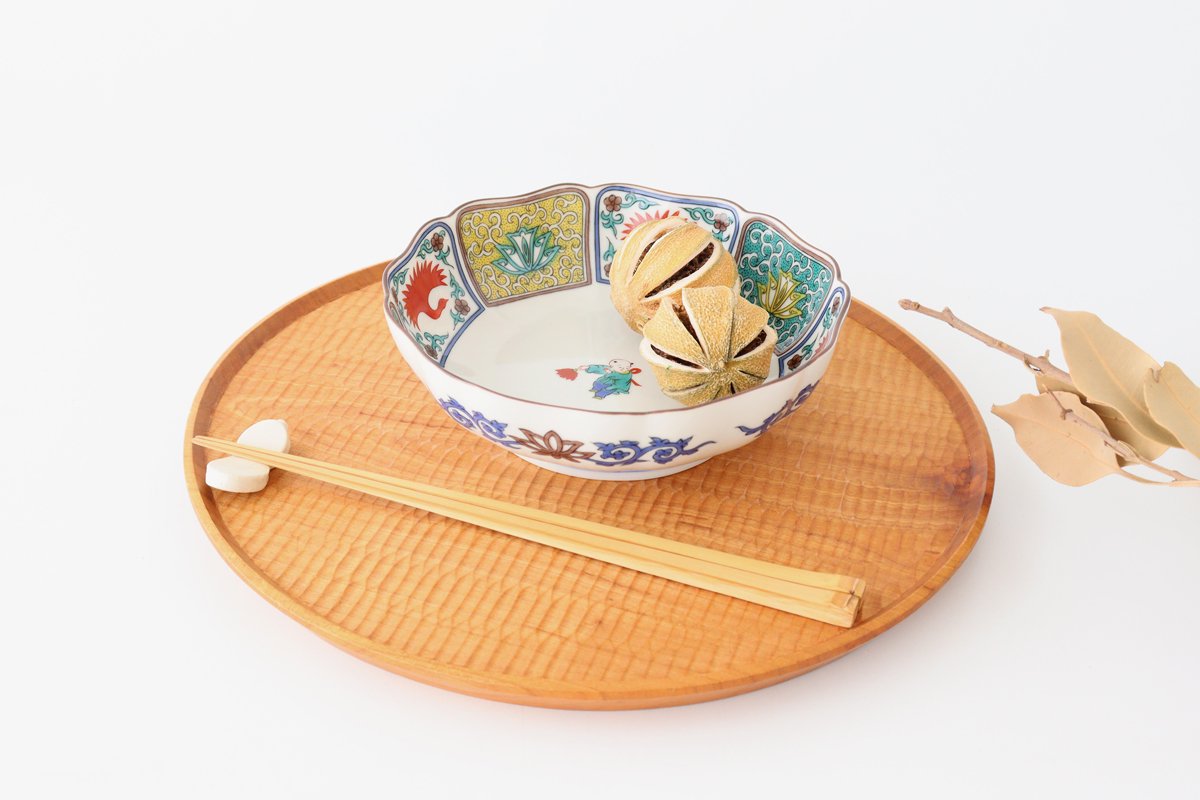
This15.2cm/6.0in bowl is eye-catching with gorgeous colors.
The sight of a small child happily playing in this bowl is sure to bring a smile to your face.
It is a useful size for serving side dishes for 3-4 people, and goes well with dishes with chunky ingredients such as fried chicken or meat and potatoes.
Lucky small plate Yoshidaya-style Aoi porcelain Seikogama Kutani ware
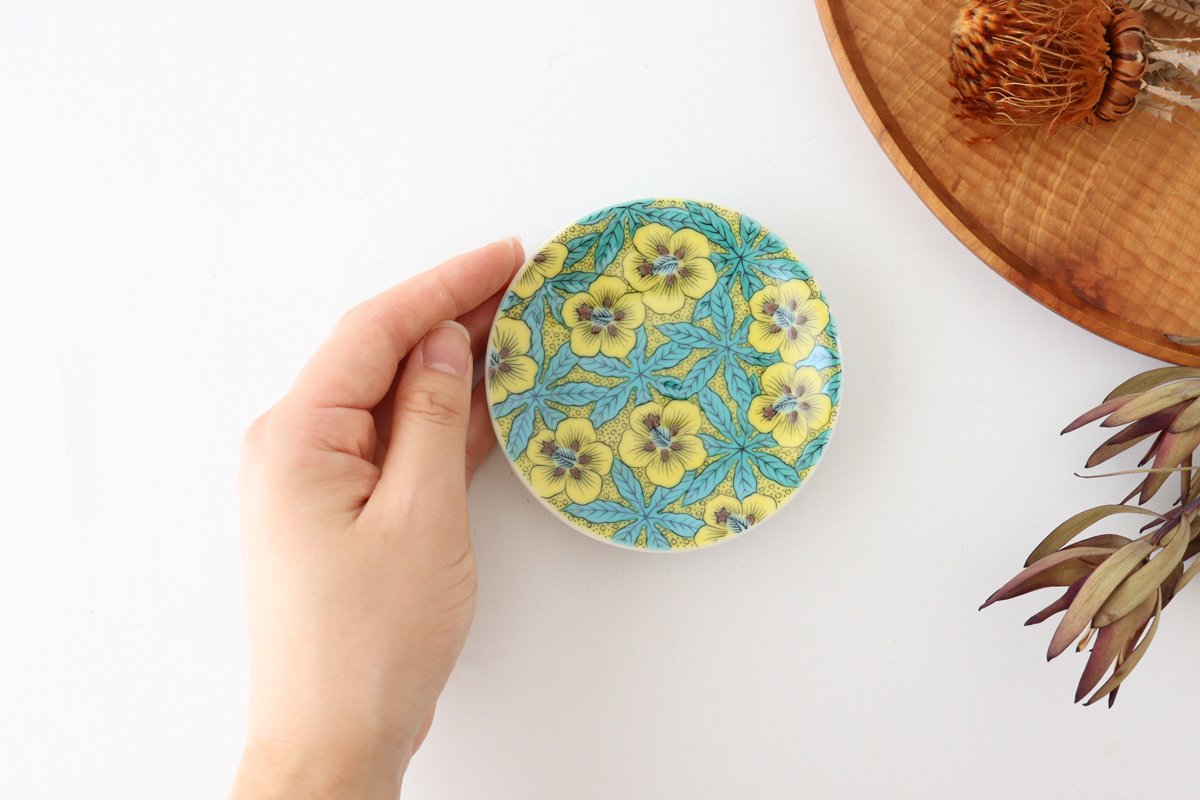
The lively designs of the Ko-Kutani motifs are impressive.
It is also nice to enjoy using the dish by placing several miniature dishes on a tray.
They are perfect for everyday use, as well as for celebrations and New Year's gatherings.
There are also plates with different patterns, so you can enjoy combining them.

Ginshu Kiln Oval Small Plate Chrysanthemum | Kutani Ware
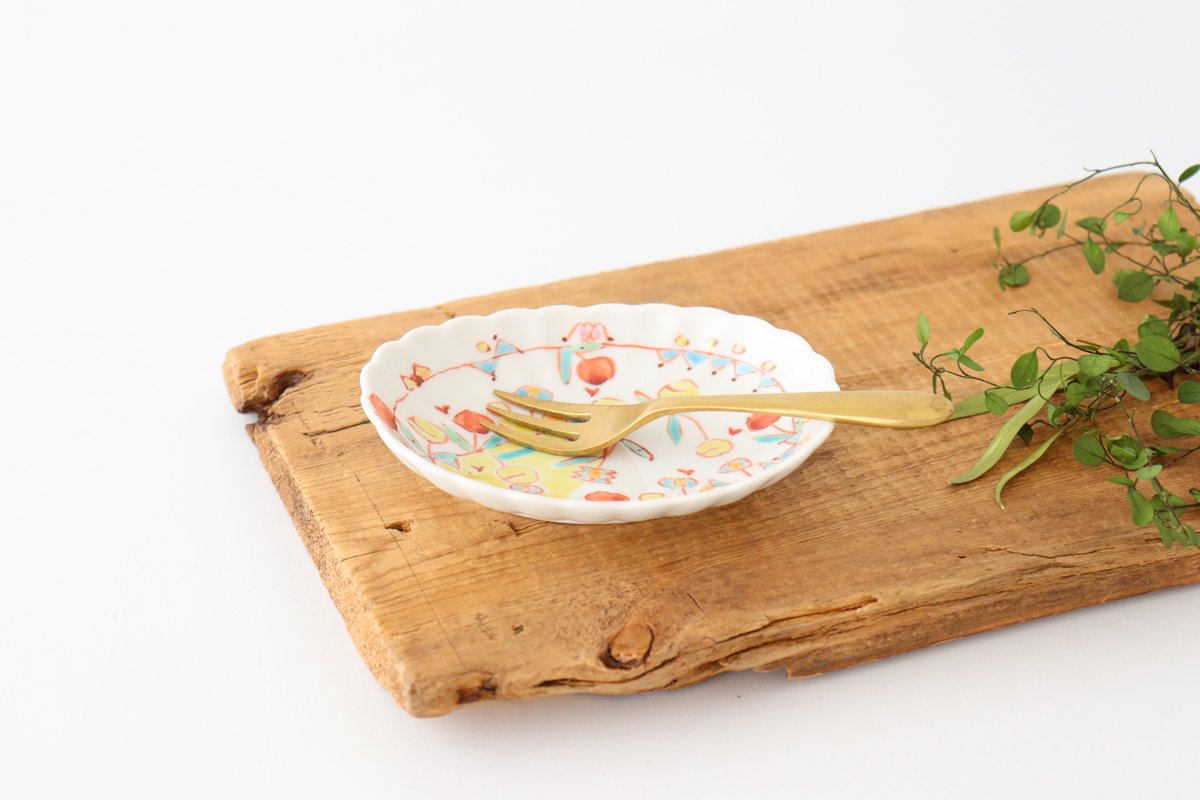
This small dish is somewhat cute, drawn with a soft touch.
When you touch it, you will feel comfortable with the unevenness of the pattern, and you will be tempted to stroke it with your finger.
It is perfect for serving small items such as oshinko (Japanese pickles) and condiments, and will transform a simple side dish into a magnificent one-dish meal.
Harekutani Cat Plate Blue | Kutani Ware
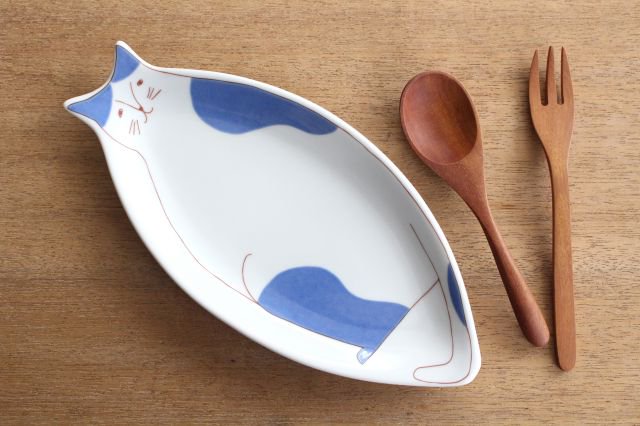
“Oh, are you having fish tonight?”
You can almost hear the voice of a cat's opinionated guardian saying, “Well, are you going to have fish tonight?
Placed in the center of the table, this dish is sure to become a popular item.
Harekutani Cup and Saucer Flower and Bird | Kutani Ware
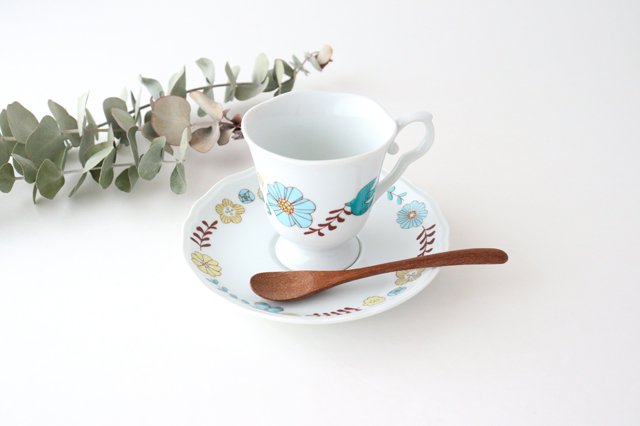
This cup and saucer is decorated with a pattern that seems to bring us spring.
The cups are filled with flowers, and the saucers look as if they have a crown of flowers on them.
The cup handles and the fluttering rim of the mouth give the cups a classic atmosphere.
If you put them together when entertaining, they will enliven your tea time chat.
Popular Kutaniyaki Artists and Potters
Seikou Kiln

Established in 1935, Kutaniyaki is a more contemporary style of Kutani-yaki that draws on the painting styles of past generations.
The glassy, vivid colors produced by his original Japanese paints are characteristic of his work, and he is particularly good at Aote Kutani, a color tone using blue in the patterns.
The kiln is a representative of Kutaniyaki, producing a wide range of styles, from traditional patterns to character designs.
Harekutani

Kutani pottery for your fine day.
We want to bring you a bright and cheerful life that makes you feel cheerful when you use it.
This new Kutani ware was created by combining traditional Kutani paints and techniques with modern designs and shapes.
The gentle and friendly design is appealing, as if it gently relaxes the tension in your shoulders.
We hope it will make your daily dining table more cheerful.
With such a wish in mind, you may want to choose this product as a gift.
Ginshu kiln
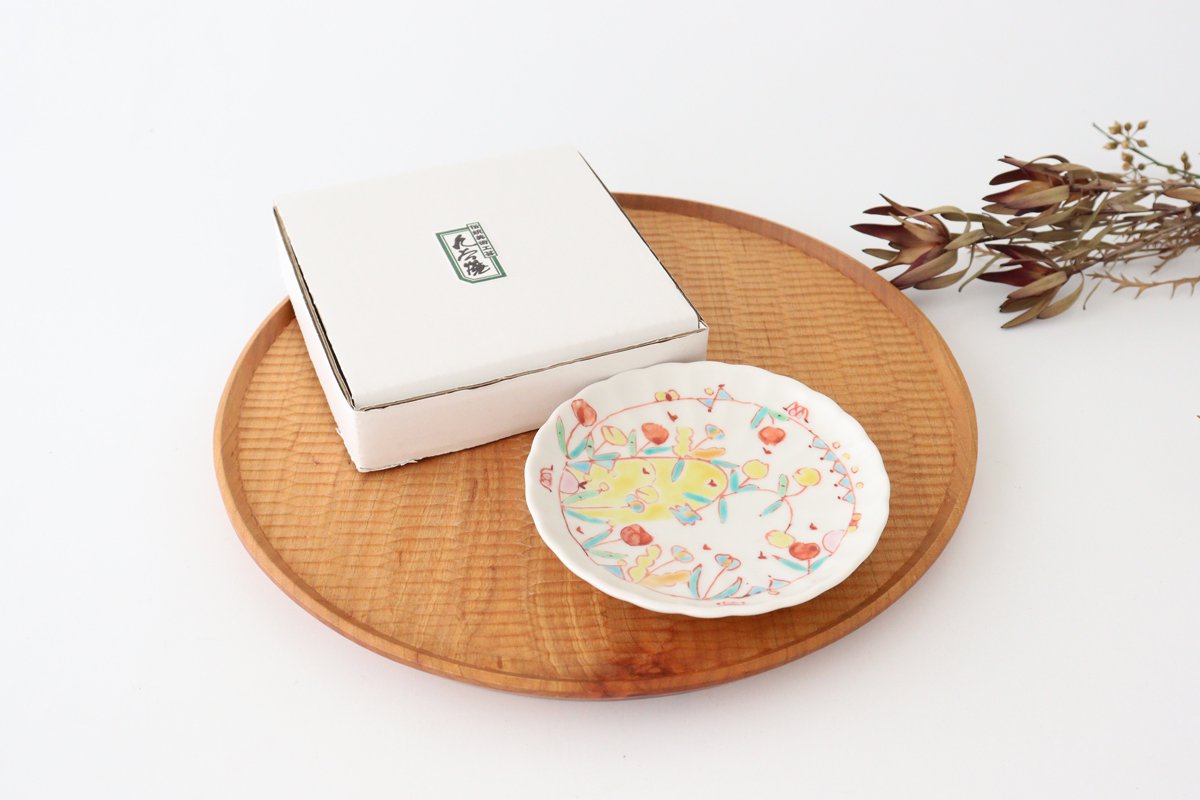
The Ginshu kiln is produced daily to create a new world of color painting that is “fun and wonderful to use.
The first generation, Bunkichi, is regarded as a master craftsman of Kutani.
The charm of Ginshu kiln is the soft and gentle hand-painted expression, which is different from the glittering Kutaniyaki made by the fourth generation, Mr. Azuma.
Mayumi Takahara

Mr. Takahara is a potter at Kutani Seigama.
He is committed to “valuing the fundamentals of tableware that remain unchanged in this ever-changing age, creating tableware with a commonplace shape and atmosphere, and making it look gorgeous when served.
The glazed patterns and elegant colors are wonderful.
Reiko Tsurumaki

Tsurumaki carefully creates each piece using a kicking potter's wheel in the nature of Kaga.
The delicate patterns and vivid colors create a joyful atmosphere.
He says, “It may look like an ordinary piece of pottery, but the more you use it, the more it will become familiar to your hand and the more you will appreciate it in your daily life.
I hope you can feel it in your daily life.
Kutani Aogama
Kutani Aogama was opened in 1971 by Yoichi Hata in Nomi, southern Ishikawa Prefecture.
More than a dozen young potters from all over the country have gathered here to create ceramics to their heart's content.
The kiln is designed, shaped, fired, and painted by a single potter, so each piece is unique and full of individuality,
The works are full of individuality of each potter.
Kamide Nagaemon Kiln
Terai Pottery was established in Terai-mura, Nomi County, Ishikawa Prefecture (now Terai-cho, Nomi City, Ishikawa Prefecture) in 1879.
The pottery is characterized by its insistence on hand-painting of each piece, and a wide range of styles are produced, including traditional designs as well as pop designs.
Stores and Sightseeing Spots where you can buy Kutani Ware when you visit Ishikawa
Ishikawa Kutani Pottery Museum
It is the only museum in Japan (registered as a museum) specializing in Kutani ware, and exhibits and introduces Kutani ware including Kutani Kurayoshi and Kutani Reinvented Kurayoshi.
Stop by before your trip to explore Kutani ware and learn a little basic knowledge to make your trip more enjoyable.
On the second floor, there is a gallery café where you can enjoy seasonal tea and sweets served in the artist's vessels.
There is also a corner where you can purchase Kutani-yaki pottery, with a regular lineup of dishes by various artists.
Address: 1-10-13 Daishojijikata-cho, Kaga City, Ishikawa Prefecture
Business hours and days: 9:00-17:00 (closed on Mondays)
*Cafe: 9:30-17:30 (last order 17:00)
HP:http://www.kutani-mus.jp/ja/concep
Kutani Pottery Village
This is the only shopping mall in the Kutani industry where the showrooms of 10 Kutaniyaki manufacturers and wholesalers are lined up.
A wide range of products, from bargain priced items to traditional crafts called “JAPAN KUTANI,” are on display.
It is also the site of the Kutani Tea Bowl Festival held every spring and the Kutani Pottery Village Festival held in autumn.
If you are looking for a souvenir of Kutani, please visit the Kutani Pottery Village.
Address:22 Izumidai-cho Minami, Nozomi City, Ishikawa Prefecture (In front of Goshikan Museum, Nozomi City Kutani Yaki Art Museum)
Office hours: 9:00~17:00
Closed:Not closed in the middle of the year
HP:http://www.kutani-danchi.org/
Kaga Traditional Craft Village Yunokuni Forest
This facility allows visitors to experience a variety of traditional crafts while fully enjoying nature on a vast green hill.
The building is a tasteful reconstruction of a grand old minka (private house) from the Edo and Meiji periods, which has been preserved in its original appearance.
In addition to Kutani ware and painting, visitors can try their hand at Yamanaka lacquerware maki-e, glass-blowing, and yuzen-dyeing.
It would be wonderful to create an original piece of artwork as a souvenir of your trip.
Address: Na-3-3, Awazuonsen, Komatsu City, Ishikawa Prefecture
Opening hours: 9:00-16:30
Closed: Temporary closure (see website for details)
HP:https://www.yunokuni.jp/mori/?lang=ja
Haduchiwo Tea Shop
Haduchiwo Tea Shop is a coffee shop located in Hazuchiwo-Rakudo in front of Koso-yu in Yamashiro Onsen.
The “Kaga Parfait” placed on a Kutani coaster is popular.
It is a local menu item made with local ingredients such as Kaga rice ponzu and Kaga stick tea jelly.
If you are tired of strolling around, this is a good place to take a break.
Address: 18-59-1, Yamashiroonsen, Kaga, Ishikawa, Japan
Business hours: 9:30-18:00
Closed: Wednesday (open if Wednesday is a national holiday)
HP:http://hadutiwo.com/chamise/index.html
Kutani Teacup Festival
Held annually over the three days of GW (May 3, 4, and 5), the festival attracts about 180,000 visitors from all over Japan and abroad, as well as local residents.
About 50 Kutani ware trading companies set up store at a special venue in the Kutani Pottery Village, where a wide variety of products, from daily-use vessels to works by Kutani ware artists, are on display at special prices for the day.
In addition, more than 20 booths and local gourmet foods are available, making this an event that can be enjoyed by people not only for its pottery but also for other purposes.
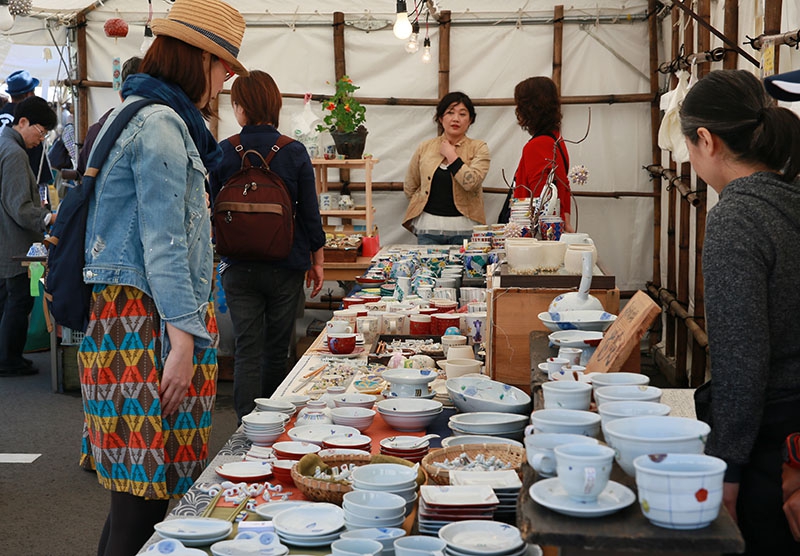
Source:Kutaniyaki Cooperative Association
Venues:Terai Gymnasium, Negami Sogo Bunka Kaikan, Kutani Toukumura, Nohmi City, Ishikawa Pref.
Operation:9:00~16:00
HP:https://kutani-shoukumi.or.jp/
Stylish Table Coordination of Kutani Ware
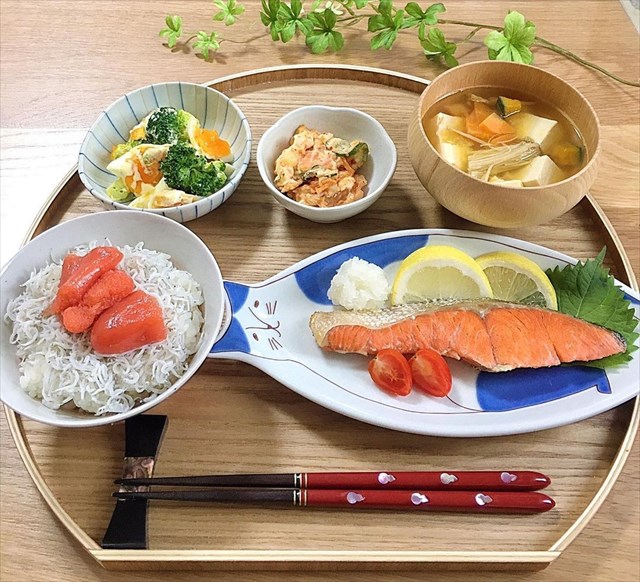
Salmon fillet served in a cat's bowl.
The fish of the day! I won't let go!” It makes for a fun dining table where you can almost hear the voices of the guests.
The cute atmosphere of the cake on the bird's back is perfect for the cake.
It will make your snack time more enjoyable.
Serve a little bit of each dish on these brightly colored Kutani Yaki small plates.
The atmosphere is like that of an obanzai restaurant, making each dish more special.
Put a little dorayaki on top for a snack.
The gorgeous atmosphere of Kutani ware goes perfectly with the simple Japanese snack.
The coordination of various genres of vessels on the tray like a set meal is wonderful.
The brightly colored Kutani-ware vessels accentuate the look.
If you are interested in Kutani ware vessels
In this article, we have introduced the characteristics of Kutani-yaki and recommended vessels.
There are not only gorgeous vessels with a sense of traditional craftsmanship, but also many casual designed vessels, so you can easily incorporate them into your dining table.
Each potter and artist has their own unique atmosphere, so be sure to take a look at a variety of Kutani-yaki vessels.
Click here to see the Kutaniyaki vessels introduced in this article.
You can also read more about the vessels tour in Ishikawa Prefecture in this article.
・Journey Around Pottery Vol. 11: Enchanting Yamanaka Lacquerware and the Beauty of Wood
・Journey Through Tableware Vol. 12: Discovering Kutani Ware and Lacquerware in Kanazawa
We sell not only the Japanese tableware introduced here but also a variety of other tableware, so please visit UTSUWABI if you would like to see more.
May you find your favorite vessels and enjoy your everyday tablescape even more.